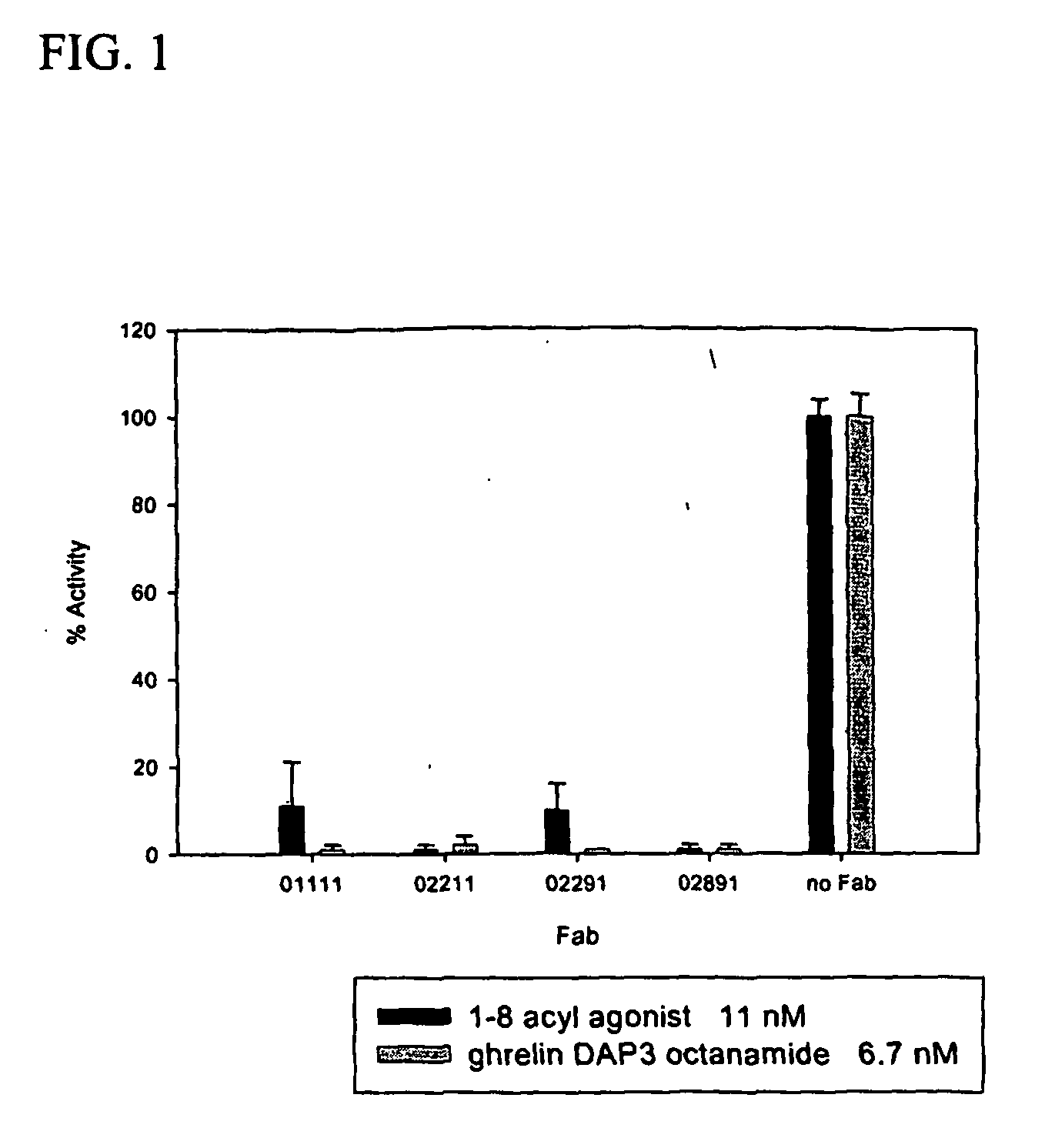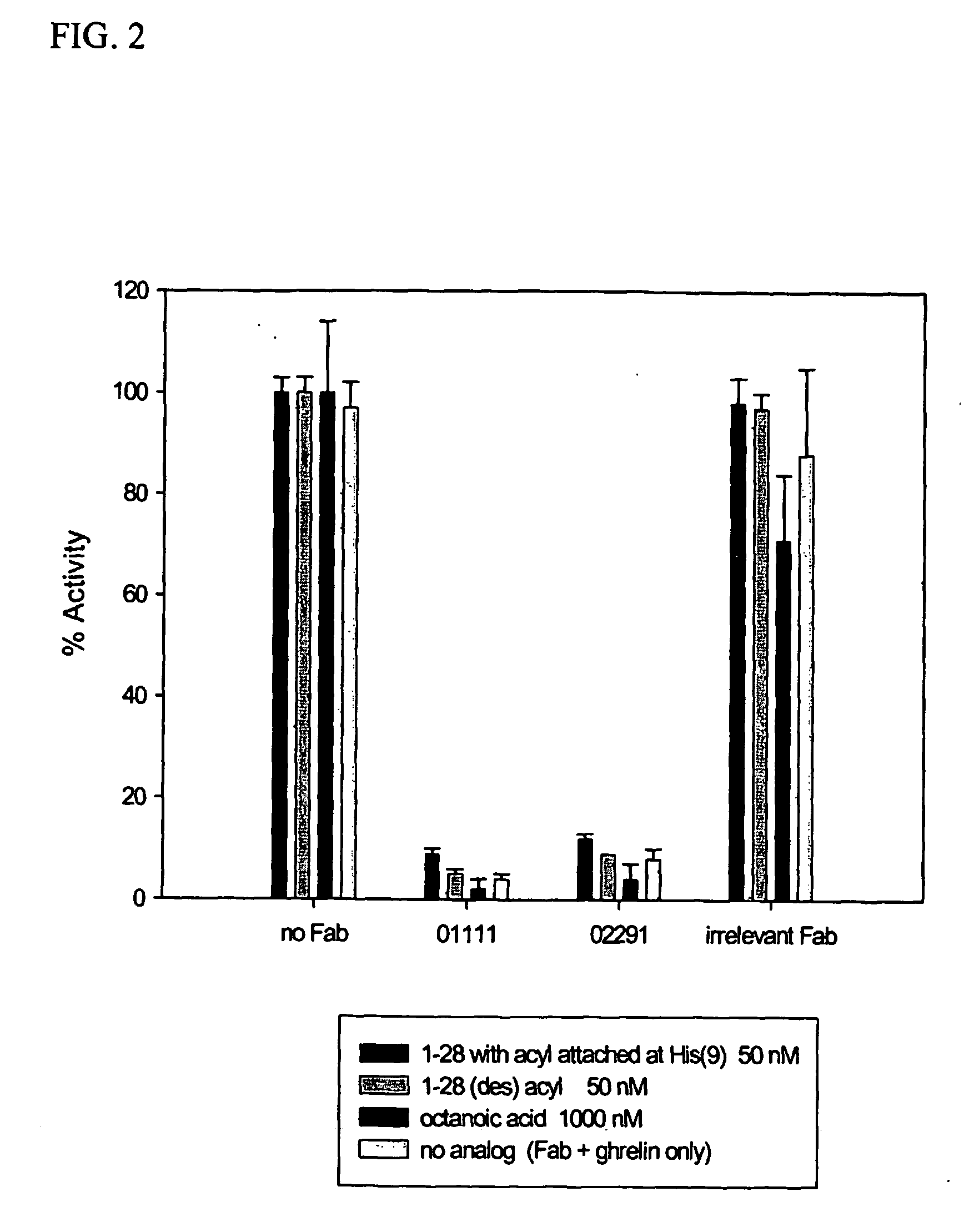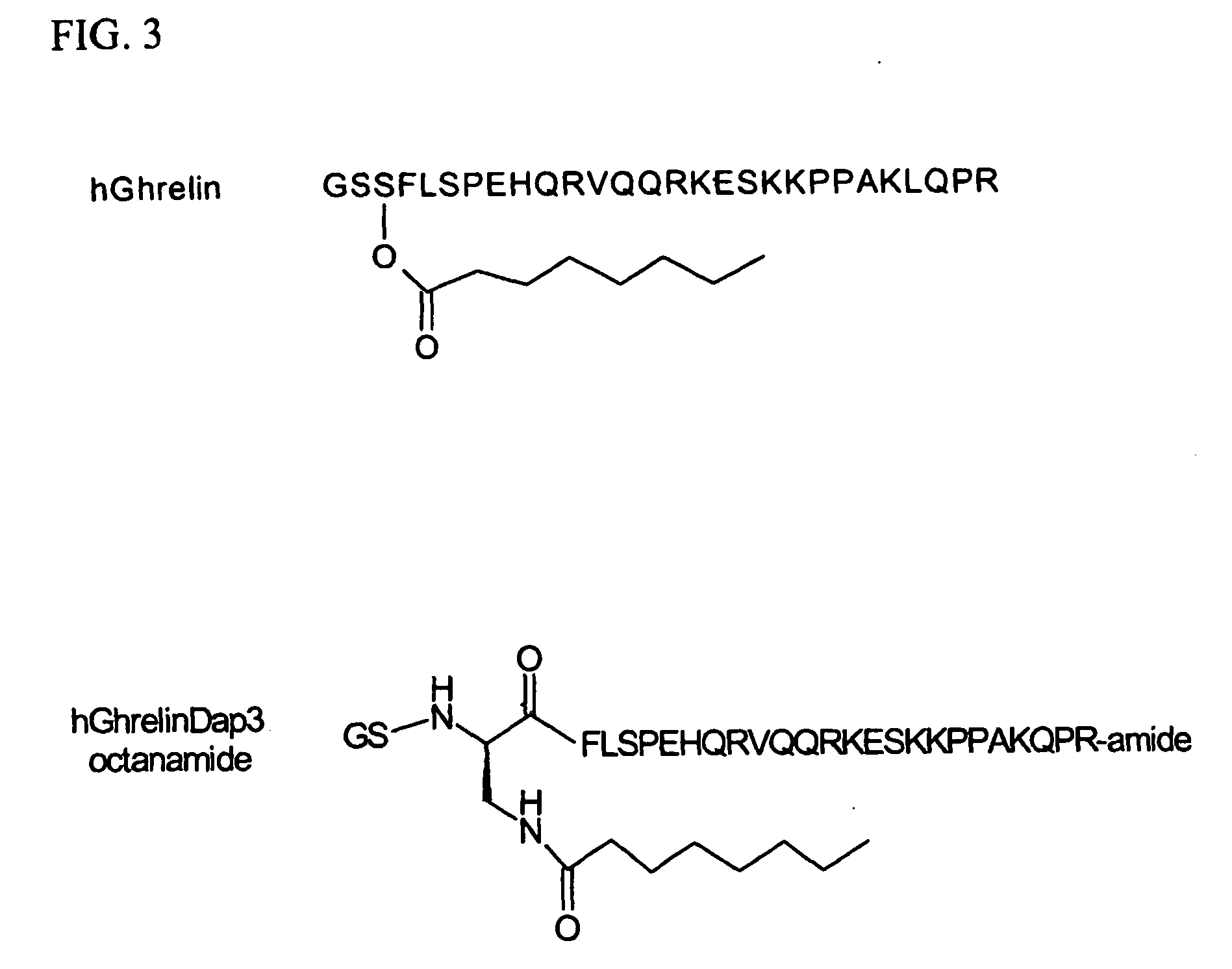Anti-ghrelin fab antibodies
a technology of fab antibodies and ghrelin, applied in the field of medicine, can solve the problems of increasing the risk of illness, increasing the death rate of all, and further affecting the quality of life, and achieve the effect of inhibiting ghrelin activity
- Summary
- Abstract
- Description
- Claims
- Application Information
AI Technical Summary
Benefits of technology
Problems solved by technology
Method used
Image
Examples
example 1
Anti-Ghrelin Fab Synthesis
[0121] The CDR and framework sequences disclosed herein have been identified from clones of Fab fragments, which were isolated from antibody libraries generated from an array of antibody RNA created by immunized C57B1 / 6 mice using Omniclonal™ antibody technology (Biosite®, San Diego, Calif.). The mice were immunized with human ghrelin-Dap3-octanamide as shown in FIG. 3. To improve the immunogenicity of this peptide, keyhole limpet hemoncyanin was conjugated to the peptide through a C-terminal cysteine according to standard methods.
example 2
Competitive ELISA Assay
[0122] Anti-hGhrelin Fabs 2291 and 1111 were tested in a competitive ELISA assay, a solution phase assay in which a compound that might compete with an antigen for binding to an antibody is first combined with the antibody in solution phase. Then binding of the antibody to the antigen is measured.
[0123] Each well of a 96-well plate was coated with 60 μl BSA-hGhrelin antigen (i.e., BSA conjugated, full-length, acylated human ghrelin, 2 μg / ml in carbonate buffer, pH 9.6). The plate was incubated at 4° C. overnight. The wells were aspirated and washed twice with washing buffer (20 mM Tris-Cl, pH 7.4, 0.15 M NaCl, 0. 1% Tween 20). Compounds (i.e., human ghrelin or ghrelin analogs) were diluted into antibody solution. The antibody solution was mouse-anti-human ghrelin Fab. The ghrelin competitor concentration was varied as listed in Tables 2 and 3 below, but the Fab-concentration was kept constant at 0.1 μg / ml in blocking solution (10 mg / ml BSA in wash buffer). A...
example 4
Affinity Measurement of Monoclonal Antibodies
[0136] The affinity (KD) of various anti-ghrelin Fabs (1111, 2211, 2291 and 2891) were measured using a BIAcore® 2000 instrument containing a CM5 sensor chip. The BIAcore® utilizes the optical properties of surface plasmon resonance to detect alterations in protein concentration of interacting molecules within a dextran biosensor matrix. Except where noted, all reagents and materials were purchased from BIAcore® AB (Upsala, Sweden). All measurements were performed at 25° C. Samples containing rat or human ghrelin (full length, acylated) were dissolved in HBS-EP buffer (150 mM sodium chloride, 3 mM EDTA, 0.005% (w / v) surfactant P-20, and 10 mM HEPES, pH 7.4). A capture antibody, goat anti-mouse Kappa (Southern Biotechnology, Inc), was immobilized onto flow cells using amine-coupling chemistry. Flow cells (1-4) were activated for 7 minutes with a 1:1 mixture of 0.1 M N-hydroxysuccinimide and 0.1 M 3-(N,N-dimethylamino)propyl-N-ethylcarbodi...
PUM
| Property | Measurement | Unit |
|---|---|---|
| Light | aaaaa | aaaaa |
| Affinity | aaaaa | aaaaa |
Abstract
Description
Claims
Application Information
 Login to View More
Login to View More - R&D
- Intellectual Property
- Life Sciences
- Materials
- Tech Scout
- Unparalleled Data Quality
- Higher Quality Content
- 60% Fewer Hallucinations
Browse by: Latest US Patents, China's latest patents, Technical Efficacy Thesaurus, Application Domain, Technology Topic, Popular Technical Reports.
© 2025 PatSnap. All rights reserved.Legal|Privacy policy|Modern Slavery Act Transparency Statement|Sitemap|About US| Contact US: help@patsnap.com



